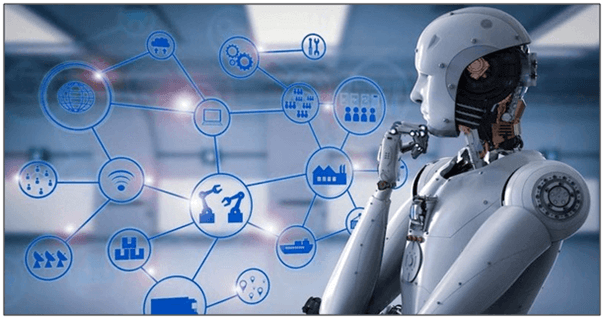Agile Procurement is to purchase a solution according to the needs and wants of the customer (made changes throughout the process) instead of following on a product specification being established in the beginning of a project.
Table of Contents
The Values of Agile Procurement
In this new era, if you say “You are not ready to practice Agile Procurement” is not acceptable. You should practice agility in procurement to gain competitive advantage position. Below are some strategic areas to embrace procurement agility.
- Supplier Relationship Management, Processes and Tools
Processes and Tools can be managed by technologies such as Machine Learning and Robotic Process Automation. You should concentrate on harnessing and improving the supplier relationship by interacting with them to understand their needs and wants.
- Working Software over Comprehensive documentation
To practice Agile Procurement is not to eliminate any procurement processes or documentation. The focus here is to streamline and simplify the processes so that they are easy to be understood and followed by different stakeholders.
- Customer Collaboration
Traditionally, procurement only involve internal customers during the beginning and at the end of the processes with detailed discussions. Such traditional approach is no longer effective in today’s fast changing world, as a lot of time and efforts will be wasted to repeat the end to end processes again to manage the frequent changes in customer’s requirements.By practicing Agile Procurement, internal customers will be involved in every phase of the processes and be allowed to contribute ideas and changes. In such agile approach, we can better understanding the needs and wants from customer and made changes accordingly to meet their expectations without delay.
- Strategic Procurement Plan at the Beginning of a Process
Traditionally, procurement typically follows plans which have been laid out at the beginning of the processes and most people follow the plans to gets things done accordingly. Such non-agile working practice sometimes do not encourage people to look for alternative ways which can get things done better than the original plan. To practice Agile Procurement, the leaders shall empower people to make some decisions to improve the solution plan along the way when necessary.
Adoption of Digital Technologies
In order to practice Agile in Procurement, digitization of the procurement processes is a MUST. To digitize the procurement processes, we need to look at the key technologies that are required to transform from Traditional Procurement to Agile Procurement. The key technologies that form the backbone and structure of Agile Procurement are: (1) Machine Learning; (2) Natural Language Processing; (3) Robotic Process Automation; (4) Big Data Analytics; and (5) Cloud Computing.
Machine Learning
An artificial intelligence (AI) technology come with the ability to learn automatically and improve from past experiences without any programming effort. Machine Learning can analyze the transactions records such as stock in transit and goods receiving. Machine Learning is also able to forecast potential delays in the procurement processes which may happen and sending alert in advance for people to plan preventive measures ahead of time. Machine Learning can also provide useful insights that help us to perform better in purchasing negotiation, by comparing historical data pricing and level of pricing based negotiations from the past purchases.
There are four types of Machine Learning:
- Supervised Machine Learning
Tell the machine what kind of output is require and what kind of results are we looking for. Basically we teach the machine to learn from past data and identify the patterns and to calculate the future outcome.
- Unsupervised Machine Learning
Not telling the machine what type of output is required and what type of results we are looking for. Basically, we do not control the machine and do not define the results.
- Semi-Supervised Machine Learning
By giving enough known data to the machine so that it can learn by itself and produce new set of results.
- Reinforcement Machine Learning
To allow the machine to train by itself through trial and error. The machine learn from past experience to capture the best results to made business decision.

Natural Language Processing
An artificial intelligence (AI) technology that helps the computer to understand the human language by reading, understanding and making sense in a manner that is valuable. It acts as a Digital Assistant in procurement which can learn from previous transactions and able to retrieve the required information. It can also help to retrieve a particular piece of information by analyzing all the relevant documents. (Example: Payment Terms from the vendors of the past transactions).

NLP is a form of AI that can read text, analyze and decipher the meaning of the text for the users. In Agile Procurement, we talk about speed and accuracy that NLP can support in terms of shorten the time to read bulk of contracts, which has a time-consuming activity in the past. NLP can help to analyze and find out the differences in terms of wordings used in the contracts. NLP can also detect invoices which are unusual compared to a standard invoice. Last but not least, NLP can also detect fraud when come to handling of financial issues with suppliers.
The full content is only visible to SIPMM members
Already a member? Please Login to continue reading.
References
Bernardo Nicoletti. (2018). “Agile Procurement, Volume 1: Adding Value with Lean Processes”. Palgrave Macmillan: Springer Nature.
Emma Cosgrove. (2019). “4 Technologies for a more Agile Procurement Process”. Retrieved from https://www.supplychaindive.com/news/4-technologies-agile-procurement-machine-learning-robotics-data/553979/, accessed 12/09/2020.
Fay Khoo Yock Fan, GDPM. (2018). “Top Five Emerging Trends in Procurement”. Retrieved from SIPMM: https://publication.sipmm.edu.sg/top-five-emerging-trends-procurement/, accessed 08/09/2020.
Kalyar Thiri Maung, ADPSM. (2020). “AI Technologies for Digital Procurement”. Retrieved from SIPMM: https://publication.sipmm.edu.sg/ai-technologies-digital-procurement/, accessed 12/09/2020.
Li Gui Li, ADPSM. (2020). “Five Digital Technologies for Procurement Optimization”. Retrieved from SIPMM: https://publication.sipmm.edu.sg/five-digital-technologies-procurement-optimization/, accessed 12/09/2020.
Michael Eng, ADLSM. (2018). “Intelligence for Effective Logistics”. Retrieved from SIPMM: https://publication.sipmm.edu.sg/data-analytics-artificial-intelligence-effective-logistics/, accessed 12/09/2020.
Sergii Dovgalenko (2020). “The Technology Procurement Handbook – A Practical Guide To Digital Buying”, Jellyfish: Kogan Page Limited.

